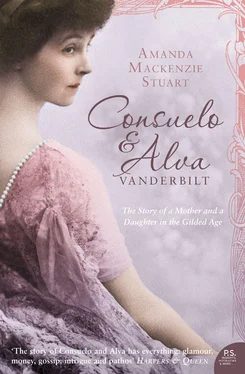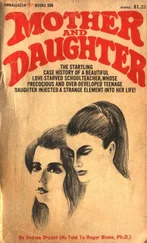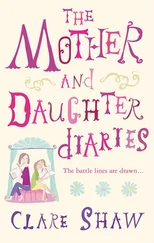The illusionists of the British Raj found a most appreciative audience in Alva, though even she was startled by the size of the Government House guest suite and the ‘ten native servants who were assigned … in beautiful royal liveries of red embroidered in gold to serve us’. 33 What impressed her most, however, was the quasi-imperial role of both Lansdownes. ‘The numerous house guests and outside friends assembled in an antechamber, and at a given moment the double doors were thrown open and the Viceroy and Lady Lansdowne were announced’. Even at lunchtime. Calcutta House had a throne room and on state occasions the Vicereine took her place on a throne on the dais beside her husband, receiving Indian princes in magnificent ceremony. Alva was even more impressed by the extent to which the British Vicereine made an important contribution in her own right, undertaking charity work in Calcutta and running much of the social life at Government House.
The Vanderbilts’ visit coincided with plans for the handover of power to Lord Elgin and tributes were already flowing in to the departing Viceroy and Vicereine. Lord Lansdowne had been a popular viceroy and the view was frequently expressed that his tour of duty had enjoyed ‘an almost unique popularity, to which the social gifts of Lady Lansdowne had largely contributed’. 34 Alva would also have been aware of the splendid formalities planned for the Lansdownes’ departure, ceremonies which would acknowledge the contribution of them both, just as the ceremonies to welcome the Curzons in 1898 acknowledged Mary Curzon’s American birth. There was no life in the shadows or sunlight by proxy for a Vicereine of India; and just as she had once pictured the Vanderbilts as Medicis, Alva could now visualise her daughter’s future.
‘My mother, whose habit it was to impose her views rather than to invite discussion, had already, on occasion, revealed the hopes she nourished for my brilliant future, and her admiration for the British way of life was as apparent as was her desire to place me in an aristocratic setting. These intentions, I am sure, crystallised during her visit at Government House,’ 35 wrote Consuelo later. Worse, conversations between Alva and Lady Lansdowne revealed that there was a most interesting way of moving this vision forward. Maud Lansdowne had a nephew of the right age, with an interest in politics. He was already a duke – the young Duke of Marlborough. Consuelo thought later that it was during her parents’ stay in Calcutta that ‘the possibility of my marriage to him may have been discussed’. Even if the idea was not discussed explicitly, however, ‘it is certain that it was then [my mother’s] ambitions took definite shape; for she confessed to me years later that she had decided to marry me either to Marlborough or to Lord Lansdowne’s heir’. 36
It was possibly in a spirit of mutual inspection that Consuelo was invited to spend a day with the Lansdownes’ younger daughter, Lady Beatrix, for Lady Lansdowne was fond of her nephew and knew that he had inherited a troubling financial burden in Blenheim Palace. The impression made by Miss Vanderbilt on the Lansdownes is not recorded but the serious-minded Consuelo was astounded (to the point of sounding quite priggish) by the ignorance and ‘homespun education’ of Lady Beatrix. On 19 January 1894 the captain of the Valiant recorded that ‘the Viceroy & party from Government House were entertained on board’. 37 The Valiant left its moorings in Calcutta on the same day and headed back to Europe. It mattered not that when she played with her friends in Paris, Consuelo never liked being queen: Alva had decided what she wanted for her only daughter.
It was later claimed by the press that the Valiant cruise broke up in India after a final blazing row between the Vanderbilts; but according to both Alva and the ship’s log, it continued as planned, sailing first to Ceylon, where the entry read: ‘left a fireman behind at Colombo so we are one short’. 38 Apart from the fireman, the party remained intact, winding its way back to the Mediterranean by way of Alexandria, where the yacht was detained by rough seas. Near Rhodes, in another strangely symbolic incident, the Valiant lost its way – the captain took a local pilot on board who turned out to be incompetent. There is no doubt that relations between the Vanderbilts were strained to the limit and these setbacks can have done little to help matters. A visit to Delphi in Greece briefly acted as balm to Consuelo’s troubled soul, but the break came by the time the yacht reached Nice. As the Valiant docked, Consuelo was told that her parents’ marriage was definitely over.
Consuelo’s initial feeling was one of relief ‘that the sinister gloom of their relationship would no longer encompass me’. 39 It was only later that she realised how little she would now see of her father and the extent to which Alva would come to dominate her life. In the short term nothing changed. After their yacht moored at Nice on 24 February 1894, Alva took Consuelo to Paris, as she had so often done before. Both Vanderbilts remained in Europe for the rest of the summer, leaving the American press in something of a bother about where they were. Town Topics sneered derisively at newspapers alleging that the Vanderbilts were simultaneously in Newport, New York and Marseilles, asserting confidently that they had left America for three years and had leased a deer forest in Scotland. There was a calm interlude of several weeks before the press grasped what had actually happened.
Meanwhile, Consuelo’s experience of Paris during the late spring of 1894 was happier than it had ever been. She and Alva moved into the Hôtel Bristol. ‘I can still see the view over the Tuileries Gardens from our windows, still enjoy our walks under the flowering chestnuts of the Champs Elysées and our drives in the Bois de Boulogne in our carriage and pair. Every day there were visits to museums and churches and lectures at the Sorbonne, but the classical matinées at the Théâtre Français were my greatest pleasure.’ 40 It was only with hindsight that she realised that her mother spent the early summer of that year preparing her for an aristocratic setting. Alva chose Consuelo’s dresses from the great French dressmakers – Worth, Doucet and Rouff – and she arranged for her to have elocution lessons, in French, with an actress from the Comédie Française, where there was a long tradition of perfect diction. It seems likely that Alva arranged these lessons to prepare her daughter for a public life such as that of Lady Lansdowne’s, where good voice projection was required when opening bazaars and returning speeches of welcome. ‘Whatever her motive, the lessons produced a voice that carried,’ said Consuelo. (Alva was later frustrated by her own fear of public speaking, brought up in a world where, in the rare event that a woman wrote a speech, she would hand it over to be read by a man.)
While they were in Paris, Alva also commissioned the portrait of Consuelo that now hangs at Blenheim, by Carolus-Duran. Alva’s choice of artist was significant for Carolus-Duran was a fashionable painter particularly renowned for his portraits of aristocratic women. In an early exercise in branding, Alva requested that the background of red velvet which Carolus-Duran normally used should be replaced by a landscape in the classical style of the English eighteenth century, wishing Consuelo to ‘bear comparison with those of preceding duchesses who had been painted by Gainsborough, Reynolds, Romney and Lawrence’. 41 On its completion, Alva arranged for it to be shipped to America and hung in the Gold Room at Marble House.
Consuelo made her Paris debut that summer at a ball given by the Duc and Duchesse de Gramont for their eldest daughter; she wore a dress of white tulle by Worth. ‘It touched the ground with a full skirt, as was the fashion in those days, and it had a tightly laced bodice. My hair was piled high in curls and a narrow ribbon was tied round my long and slender neck. I had no jewels and wore gloves that came almost to my shoulders. The French dubbed me La belle Mlle. Vanderbilt au long cou. ’ 42 The party was a bal blanc , as parties for debutantes were known, where all the young women wore white. Elisabeth de Gramont remembered Consuelo as ‘a tall girl whose small head with retroussé eyes like a Japanese, drooped languidly over her shoulder. She possessed great charm.’ 43 Such evenings were misery for ‘wallflowers’ for whom any help from artifice was banned. ‘Good girls were dressed in light, insipid colours and the poorest of materials, and all the touches that give “tone” – diamonds, powder, paint and perfume – were rigorously forbidden.’ 44 The aces of the period, the grand ‘marrying men’, would sometimes look in briefly at these social gatherings, at the rows of nervous, perspiring debutantes lined up like cattle for their inspection. (On one occasion Elisabeth de Gramont heard one say: ‘This place stinks of armpits, let’s go to Maxim’s.’ 45 ) There was little opportunity for conversation because permission to dance had to be sought from the young lady’s chaperone and as soon as the dance was over, she was led straight back to her mother.
Читать дальше












